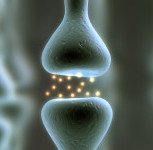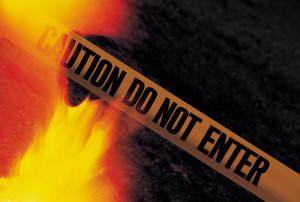Pain School for Caregivers Course 1- What is Pain?
Pain School for Caregivers
Course 1- What is Pain?
Author: Mark Parkinson RPh: President AFC CE
Credit Hours 1.5- Approximate time required: 90 min.
Educational Goal:
To provide Adult Foster Care providers with information that will help them understand and manage pain.
Educational Objectives:
1. Give a better understanding of what pain really is.
2. Provide the definitions of pain terminology
Procedure:
1. Read the course materials. 2. Click on exam portal [Take Exam]. 3. If you have not done so yet fill in Register form (username must be the name you want on your CE certificate). 4. Log in 5. Take exam. 6. Click on [Show Results] when done and follow the instructions that appear. 7. A score of 70% or better is considered passing and a Certificate of Completion will be generated for your records.
Disclaimer
The information presented in this activity is not meant to serve as a guideline for patient management. All procedures, medications, or other courses of diagnosis or treatment discussed or suggested in this article should not be used by care providers without evaluation of their patients’ Doctor. Some conditions and possible contraindications may be of concern. All applicable manufacturers’ product information should be reviewed before use. The author and publisher of this continuing education program have made all reasonable efforts to ensure that all information contained herein is accurate in accordance with the latest available scientific knowledge at the time of acceptance for publication. Nutritional products discussed are not intended for the diagnosis, treatment, cure, or prevention of any disease.
Pain School for Caregivers
Course 1- What is Pain?
When considering medical topics care givers usually don’t think of pain as a separate subject. We usually consider it as part of other topics such as cancer or back injury. Did you know that in the US, pain is the number one medical concern of all patients? It is THE reason why patients see doctors. It is by far the most common complaint, more than all other complaints combined. Think about it, isn’t the first words out of your mouth at a doctor’s office is “Doc, I have a pain right here”. I bet that if you did a study that a major part of your own care giving efforts would be involved in taking care of pain. If pain is such a big concern why don’t we in the medical community make a bigger deal about it? Why don’t we focus more attention on the problem? Why don’t you think about pain as a separate subject?
The answers to those questions are more complicated than you think. For being such a prevalent subject, it’s surprising what misconceptions and lack of knowledge surrounds the concept of pain. What you think you know turns out to be inaccurate, incomplete and sometimes just plain wrong. There have been a lot of advances in the study of pain and caregivers must bring themselves up to speed. What you need is to start fresh from the beginning. What you need is to go back to school, pain school. The following course is the first of a three part series of CE courses, designed to help you think of pain as a separate component of care giving. They will help you know what it is and why we have pain. They will give you the knowledge and care giver tools that you need to manage the aches and pains of your clients more effectively.
So let’s get started, School is now open.
 |
Understanding the Basics of Pain
Is Pain Bad?
Pain is a tricky subject for caregivers. We and our residents are genetically and socially hard wired to avoid it. We eliminate pain as quickly as possible. When we can’t get rid of the pain our whole life is affected. We usually don’t even want to think about the subject of pain. There is just no good that comes from it, right? Don’t be so fast to judge, pain is good. That’s right; pain is a blessing, a necessary and important part of your residents lives. It helps them avoid trouble and keeps them from damaging themselves. Where would you be without pain? You’d probably be dead that’s where, or at least always in danger of being hurt. Those who can’t feel pain have to spend most of their time and efforts being very, very careful. Without the aches and pains of your patients your care giving job would be much more difficult. As caregivers your real job is not to eliminate pain but to manage it. The first step of effective pain management is to understanding what pain really is?
What is pain?
It may sound like a silly question. Everyone has experienced it, so we all know what pain is, right? Let me ask the question in a different way. We all know what pain feels like but do we know what pain actually is? Understanding the answer to this most basic question is critical in attempting to managing pain.
Pain as defined by the experts
"An unpleasant sensory and emotional experience associated with actual or potential tissue damage, or described in terms of such damage." International Association for the Study of Pain (IASP)
"Huh" What a mouthful, let me try to put that into everyday language. Pain is a reactionary defensive mechanism whereby the mind interprets signals from the nerves as unpleasant for the purpose of stimulating action to prevent injury, even if there is just the potential for injury and no actual damage.
That's still is a pretty complicated definition. Let us break it down a bit further and explain some details that will help you later on.
First: Let's start with nerve signals to the brain.
The nerves are a system of specialized tissues built to send electro-chemical signals, mainly to and from the brain. Individual nerve cells are set in a series, like wiring all through the body. Eventually the "wiring" connects to the spinal column and then to the brain. Surrounding and in the nerves (especially at the ends) are chemical ions that carry tiny electrical charges. Normally these charges are balanced and nothing happens. But alter the chemicals even a little bit and the balance tips, resulting in an electric signal build up. Once the electricity reaches a certain charge the nerves "fires" and sends the charge all the way to the end where it upsets the ion balance of the next nerve. Thus the next nerve fires and so on, sending the signal eventually to the brain. Once the signal is gone, nerves quickly bring all the chemical ions back into balance again and the nerve is "reset" for the next stimulus.
The brain interprets the nerve signal
When a nerve signal reaches the brain, it is just an "on" signal. There is no such thing as a pain signal, or a hunger signal, etc… The brain has to receive input signals from other nerves and interpret what the combination of signals mean. Once the brain has enough signals it can figure out what is going. It's amazing to me that all the complex action, reaction, thoughts and emotions we have all comes down to is combination of on or off signals. Of course nerve function is much more complicated than that. There are millions of nerve cells. Each nerve is connected to each other at several points creating trillions of connections. Don't forget about the complex chemical "ion soup" that effects the on and stay off signal. All these trillions of connections all going on or staying off in infinite variety is what really creates the interpretation of nerve signals we call brain function.
Second: Let’s consider how nerve and brain function relates to what we call pain.
Most of the nerve function of our body happens automatically without much active thought from us. Our heart beats, we breathe in and we breathe out, our senses constantly send signals etc…. It all occurs automatically as we move through our life. Then something happens that starts to damage our tissues. Let's say our hand gets too close to a fire. Lots of nerve signals flood toward the brain. Our brain receives the sudden rush of signals and automatic alarms systems (Pain) start going off. Those alarms (Pain) are reporting that our hand is getting damaged and you got to do something about that. Our body quickly pulls the hand away.
Unfortunately we weren't fast enough and some fingers got damaged. The nerves continue to send signals to the brain that something is still wrong. New alarms go off (Pain) and your brain thinks "I have to do something about that". Over the years our brain has learned that cold blocks out hot. So reacting to the alarms going off (Pain), we stick our hand in cold water to try to stop the heat damage signals. With no damage signal happening the alarms (Pain) are turned off. As a result the cold water cools down the damaged hand, preventing further harm. In the future when our hand starts to feel the heat we remember what happened before and the whole process happens even faster, preventing future tissue injury.
So pain is a reaction to nerve stimulus that is produced in the brain after the fact, not at the point of damage. Pain is a learned "output" of the brain that is supposed to stimulate a physical reaction, not the nerve signal input itself. After the brain has become sensitized to the process (learning), pain can happen even if there is no tissue to damage. All the brain needs is enough of the right combination of nerve signal inputs to set the alarm off.
A new way of thinking about pain.
For most of you this will be a brand new set of thoughts that is hard to swallow. But consider, knowing what you know now, can you explain phantom limb pain? Pain that is "felt" even when the limb is not there. Or can you understand why you feel the pain of a cut only after you see the blood dripping out of the wound.
This is pretty deep medical thinking and it goes against what is commonly thought. But as you go through your life consider what is going on around you in regards to pain and how you react to it. You'll find that some of those loose dots of your life start to get connected with understanding. You can now start to form a clearer picture of what actually is going on. A clearer picture gives you power over pain that you did not have before. With this new understanding your care giving efforts will become much more effective in helping your resident’s live normal lives.
The Language of Pain
Pain is a multifaceted medical concept. It seems so simple and yet is very complex because of the many variables involved. It can be felt in every part of the body, to varying degrees and for different length of time. Each person feels pain differently and many factors contribute to how pain is perceived and felt. In order to make sense of it all and communicate effectively special terms have been added to the medical language of our time.
But with new terminology come new challenges.
I've seen it over and over again. Well-meaning medical professionals start to tell a patient or their caregiver what they are supposed to be doing. They start spouting phrases and words that seem to come from a different planet. When the patient's eyes start to glaze over and their mouth hang slack the medical professional will say something like "Do you understand what I just said?" How are you supposed to follow instructions when you don't even know what the words mean? How are you supposed to be a good caregiver when everyone is talking in a foreign language? -"Medicalesse".
Get the Book
When you're in a foreign country you bring along a translating book so you can understand and make communication easier. It's time for you to get a Medicalesse translation book. They are medical dictionaries, medical terminology workbooks and medical encyclopedias. You can get small inexpensive pocket versions where ever books are sold and on-line from your computer.
They are easy to use and small enough to carry with you. So do that- carry it with you. Bring it to doctor appointments, set it by the computer, and use it when you need to. When you understand the terminology better you will start to understand better what to manage and how better to care for your patients.
Knowing what to do will give you power over the pain.
Pain Terminology
Ache and pains can be experienced and described in a dizzying amount of ways. Literally each case can be different from all others. To make sense of all those cases, modern medicine has classified the different types of pain that a person can experience.
Descriptive terms
Duration:
It may not seem like it at times but pain is a temporary situation. A basic truth of pain is "Usually pain lasts only as long as the brain sees a need for it." There are two general categories that describe how long pain has lasted.
- Acute- Pain that resolves quickly.
- Chronic- The definition of chronic pain keeps changing. Generally it is defined as pain lasting longer than 3 to 6 months.
Sometimes you'll see Subacute which means pain that lasts 1 to 6 months
Intensity:
Everyone feels pain differently. There is no way to subjectively measure how intense pain is. Therefore pain is most often measured objectively by a pain scale. For example- "On a scale of 1 to 10, ten being the worst pain imaginable, what is your pain like today?" We'll cover pain scales later. Because pain is subjective- everyday descriptive terminology is most often used. Like dull, sharp, tingly, cold, hot, etc….
Location:
Even though pain is generated in the brain the stimulus for the pain comes from a different location. To help describe the location of the stimulus, terms are stuck on to the word pain, like the following;
- Generalized- Pain that is non-distinct or broad in location.
- Localized- Pain restricted to a specific location.
- Referred- (also called reflective pain), Pain perceived at a location other than the site of the stimulus.
- Phantom - Pain that feels like it is coming from a body part that is no longer there.
- Central-ized- Pain in reference to the Central Nervous System- CNS (spine and brain)
- Peripheral-ized- Pain outside the CNS.
Classification:
Another basic truth is- Pain comes from our nervous system, not from the damage being done. It is possible to have damage done to the body without feeling pain and it is possible to feel pain without any damage being done. To help recognize which part of the nervous system is being activated the following terms are used.
|
Classifications of Pain |
|
|
Nociceptive Somatic Visceral |
Non-Nociceptive Neuropathic Sympathetic |
Nociceptive- pain signals that start at the ends of the nerves where the feeling receptors are.
- Somatic- Pain that is felt in the musculo-skeletal systems. The skin, muscles, bone and joints. (example blisters or sprains)
- Visceral- Pain that is felt in the internal organs. (example a stomach ache)
Non-Nociceptive- pain that starts where there is no feeling receptors present. You might think how is that possible? Remember, nerve signals are just an electrochemical charge flowing to the brain. The nerves can still "fire" without them being touched.
Neuropathic- (also known as nerve pain) Pain that is caused by a lesion or disease anywhere on a nerve. (example shingles or a stroke)
Sympathetic- Pain that is caused by injury or abnormality in the sympathetic nervous system. These are the nerves that control the automatic systems of the body and the flight or fight response. (example generalized post surgery pain)
*note- In non-Nociceptive pain something has damaged the nerves and they become unstable and fire chaotic signals. The brain interprets these random signals as a pain alarm.
Other important terms
Allodynia- pain due to a stimulus that does not normally provoke pain
Analgesia- absence of pain in response to stimulation which would normally be painful. (analgesic = pain killer)
Anesthesia- the absence of all senses
Angina- pain associated with cardiac conditions.
Breakthrough- short term pain that is not relieved by normal pain management
Intractable pain- intense chronic pain that cannot be relieved by medical intervention
NSAID- Non-steroidal Anti-Inflammatory Drug, medication that controls pain by reducing the inflammatory response.
Neuralgia- pain in the nerves
Neuritis- inflation of the nerves
Neuropathy- change in the function of a nerve due to damage or disease
Noxious Stimulus- nerve stimulus that is potentially or actually causing tissue damage
Opioid Analgesics- narcotic pain killing drugs
Pain Tolerance threshold- the level of pain that motivates pain relieving activity.
Palliative therapy- designed to make the patient comfortable without attempting to cure the illness.
Parenthesis- an abnormal sensation, whether spontaneous or evoked
Psychogenic- pain that is caused prolonged or intensified by emotional, mental and behavioral factors
Pseudo-addiction- development of addiction behaviors that are actually desperation attempts to get relief from uncontrolled pain.
Radiculopathy- disturbance of function or pathologic change in one or more nerve roots
Refractory pain- pain that is resistant to therapy
Sensitization- nerves become more sensitive to inputs. (feeling things easier)
Rebound headache- headache that occurs after the pain medication wears off
Salicylates - a class of pain killers that includes aspirin
Sciatic- pain radiating from the back into the buttock and leg along it’s the back or side
Trigger point- a hypersensitive area or site in muscle or connective tissue
Practice
It may feel strange and confusing at first, but practice by actually using the terminology. Once you sound like you know what you are talking about, people will start to pay attention to you. The medical community will start to be more cooperative as well. Your knowledge may be small now but it will grow!
As more and more adult foster care providers start sounding like medical professionals the whole in-home care provider industry will benefit.
Why should I even care?
If you’re like me at this point your brain is starting to get tired of dealing with abstract ideas like anatomy and medical terminology. You might be thinking, “What does all this have to do with what I am doing in my home and my clients?” What I am attempting to do is give you a better understanding what is actually going on. With this view of the bigger picture you’ll understand what is actually going wrong in the lives of your clients and what the doctor is attempting to do about it. With this greater understanding you’ll be able to focus your efforts on more effective care giving. You’ll be able to ignore old wives fables and quack placebo remedies. You’ll be able to be more effective in patient monitoring and communicating that information back to the doctor for quicker problem resolution. Ultimately, your clients will be pain free quicker, therefore happier and easier to take care of.
Applying Your Knowledge About Pain
An underlining principle of care giving in pain management is that everyone experiences pain differently. There is no-one size fits all. What works for pain in one case may not work for another. What remedies works for the mom may not work for the daughter, etc …. Because of this variability most medical professionals treat pain in a systematic way. Starting low and climbing a ladder to more potent remedies. Sometimes that ladder is more an elevator zooming up to the more powerful remedies fast. But the basic idea is the same. Start with what you think they need then titrate up (give them more by degrees) until the patient is comfortable.
Conclusion
End of Course 1
Hopefully by now you are more up to speed with your understanding of what pain really is. With some practice you can now even speak the language of pain. With this better understanding you are now prepared to learn how to be more effective in managing it. In Courses two and three you will be taught about acute and chronic pain management. As with any school it’s now time to test your knowledge with a final exam-Good Luck.
After you take the exam- class is dismissed.
 |
References:
1. Thomas E.Quinn. Pain Topics, What is Pseudoaddiction?. PainRreliefCconnection Vol 2 #1.Jan 2004.
http://www2.massgeneral.org/painrelief/pain%20topics/what%20is%20pseudoaddiction.pdf
2. Stephan F. Grinstead. Addiction Versus Pseudoaddiction. Addiction-Free Pain Management blog. Jan 2008 .http://www.addiction-free.com/blog/addiction-versus-pseudoaddiction/
3. Back Pain treatment. Back Pain Center. eHealth.com
http://ehealthforum.com/healthcenter/back-pain/back_pain_treatment-e82.html
4. AAPM Facts and Figures on Pain. American Academy of Pain Medicine.
http://www.painmed.org/patientcenter/facts_on_pain.aspx
5. Partners Against Pain.
http://www.partnersagainstpain.com/
6. American Chronic Pain Association.
7.WebMD Back Pain Health Center.
http://www.webmd.com/back-pain/default.htm
8. Suzanne Levy. 6 Mistakes Pain Patients Make. Health.com
http://www.health.com/health/gallery/0,,20387697_7,00.html
9. John P Revord. Pain Management for Chronic Back Pain. Spine-Health.com.10/12/2012
http://www.spine-health.com/treatment/pain-management/invasive-pain-management-techniques
10. Pain Treatment Topics. Glossary of Terms. Pain Topics.org.
http://pain-topics.org/glossary/
11. Massage Therapy: An Introduction. National Center for Complementary and Alternative Medicine 8/2010.
http://nccam.nih.gov/health/massage/massageintroduction.htm#safety
12. Pain Action.
13. Pain Medications. Drugs.com
http://www.drugs.com/condition/pain-generic.html
14. Massage. Wikipedia The Free Encyclopedia
http://en.wikipedia.org/wiki/Massage
15. Anesthetic. Wikipedia The Free Encyclopedia
http://en.wikipedia.org/wiki/Anesthetic
16. Nora Volkow, The Essence of Drug Addiction. The Brain-Understanding Neurobiology, Teachers Guide. National Institute of Drug Abuse, National Institutes of Health
http://science.education.nih.gov/supplements/nih2/addiction/guide/essence.htm
17. NINDS Chronic Pain Information Page. National Institute of Neurological Disorders and Strokes. 5/22/13
http://www.ninds.nih.gov/disorders/chronic_pain/chronic_pain.htm
18. Sleep Hygiene: Helpful Hints To Help You Sleep. Sleep Disorder Center. University of Maryland Medical Center 8/3/2010
http://www.umm.edu/sleep/sleep_hyg.htm
19. R. Morgan Griffin, When Aches and Pain Disrupt Sleep. Osteoarthritis Health Center. WebMD 2/1/07
http://www.webmd.com/osteoarthritis/features/when-pain-disrupts-sleep
20. Exercise to Help Manage Chronic Pain And/Or Fatigue. War Related Illness and Injury Center, Office of Public Health, Department of Veterans Affairs.
http://www.warrelatedillness.va.gov/education/factsheets/exercise-to-manage-pain.pdf
21. Using the Pain Scale: How to Talk About Pain. Living With Chronic Pain, WebMD.3/9/11
http://www.webmd.com/pain-management/chronic-pain-11/pain-scale?page=2
22. Chiropractic. Wikipedia The free Encyclopedia
http://en.wikipedia.org/wiki/Chiropractic
Pain School for Caregivers
Course 1- What is Pain?
Exam Portal
click on [Take Exam]
Purchase membership here to unlock Exam Portal.
|
|
|
|
|
*Important*
Registration and login is required to place your name on your CE Certificates and access your certificate history.
Username MUST be how you want your name on your CE Certificate.
| Guest: Purchase Exam |








